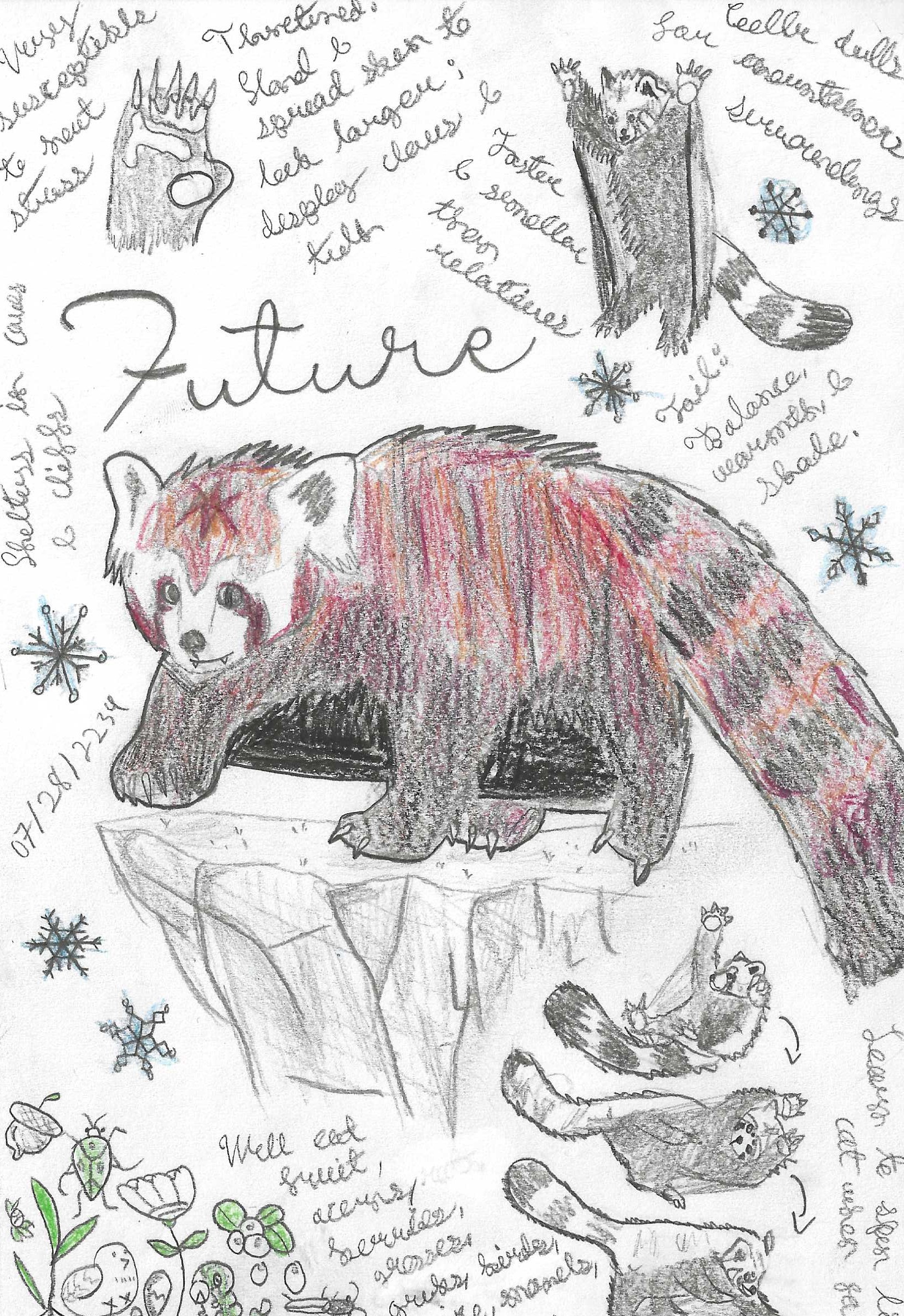Red pandas live in mountainus tropical forests in Nepal, China, and Myanmar. Although these areas currently receive around 140 inches of rain annually, global warming may change this. As cover from predators lessens, the red pandas, who are also extremely susceptible to heat stress, will migrate up the Himalayas. There they will take shelter on cliffs instead of trees, learn to spin when falling (like a cat), and grow a longer tail for balance, warmth, and shade. They will switch over to the non-bamboo foods they currently only snack on (ex. mice and berries), and their claws, false thumb, and teeth will grow. The scent they use to divert predators will strengthen and they’ll grow loose skin to appeare more threatening when on their hind legs. Finally, their eye-rings will darken to counteract increased sunlight and their coats will become fluffier (for warmth) and darker (for better camouflage).
Contact us
Thank you for your interest in contacting Future Engineers. We look forward to connecting with you!
General Inquiries
support@futureengineers.orgSponsorship Inquiries
sponsor@futureengineers.org

